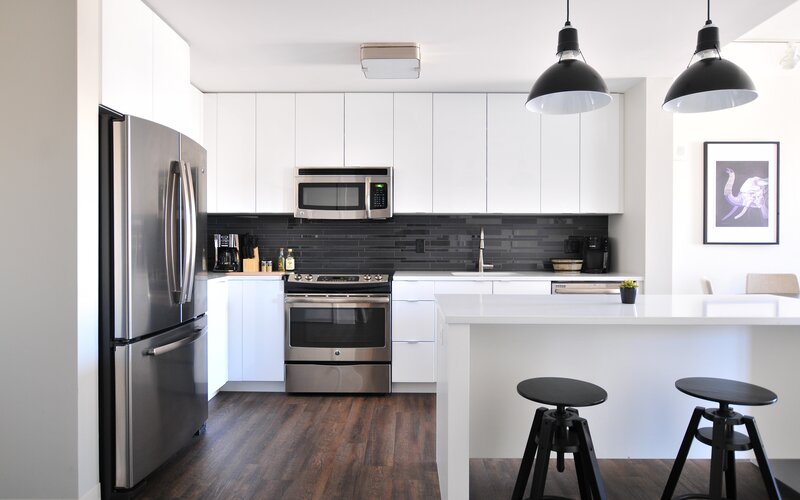Designed as a measure to ease supply issues plaguing the property market, the National Housing Accord sets a target of constructing one million new homes over five years from 2024. While most of this will largely rely on the private sector, the Federal government hopes to chip in by directly funding the supply of 10,000 affordable homes at a cost of $350 million over the same period.
States and territories will also support up to an additional 10,000 affordable homes, increasing the number of dwellings that can be delivered by governments under the Accord to 20,000.
Westpac Institutional Bank Property Analyst Frank Allen said the target of 200,000 new homes a year from 2024 would need to go close to matching the highest achieved during Australia’s high-rise boom - 223,500 dwellings completed in the 12 months to March 2017.
“Meeting the target would depend on the type of dwelling developed,” Mr Allen said.
Some have suggested the target lacks ambition given Australia built close to one million new homes over the past five years.
However, CoreLogic Head of Australian Research Eliza Owen said it is ambitious when considering the current economic context of higher interest rates, falling home prices and supply-side constraints.
“The past five years have been conducive to high levels of construction - notwithstanding immense bottlenecks for the construction industry in past two years - and there’s no guarantee activity levels will remain at the same level for the next five years,” Ms Owen said.
“As interest rates rise, home prices fall and supply-side constraints persist, the delivery of a million homes is not guaranteed and may be more ambitious than what was achieved in the past five years.”
Significant increases to the average rate of property construction over the past five years have been headlined by falling and record-low interest rates, strong price incentives for developers, HomeBuilder grants, and an investment-led, off-the-plan apartment building boom.
“The delay to start from 2024 is probably to allow the construction sector to settle, as it’s currently struggling with labour and material shortages and surging costs,” Mr Allen said.
Property specifics relating to what makes up an ‘affordable’ home are yet to be unveiled regarding the Accord, given the strategy does not come into play until 2024.
One million properties from 2024, but what else?
Aside from the commitment of a million homes from 2024, the government details the Accord also covers a range of immediate actions and areas for further work to ease housing affordability pressures. These include:
-
States and territories to expedite zoning, planning and land release for social and affordable housing.
-
The Commonwealth to provide financing options through the Housing Australia Future Fund to facilitate institutional investment in social and affordable housing.
-
Working with local governments to deliver planning reforms and free up landholdings.
-
Institutional investors to leverage investment that delivers for their members’ interests and for the national interest.
-
Construction sector peak bodies to support high energy efficiency rating construction, the training of more apprentices under an extended Australian Skills Guarantee and work to make housing more responsive to demand.
What institutional investors will fund the Accord?
The Accord will seek to tap into the superannuation system, which according to the government, is hungry for investments that will deliver stable returns over the long term for the benefit of members.
CoreLogic’s Eliza Owen notes traditionally, institutionally-funded housing has not been a large part of Australian housing stock.
“Australian tax settings in particular are far more conducive to individual, ‘mum and dad’ investors participating in the housing market than large managed funds,” she said.
“Part of the reason is institutional investors seek solid rental returns and despite rising rents in our populous cities of Sydney and Melbourne, gross yields remain relatively low at 2.9% and 3.1% respectively. This makes long-term rental investments less viable.”
“To combat this, the accord outlines funding that will incentivise institutions to invest in social and affordable housing by covering the gap between market rents and subsidised rents.”
Ms Owen believes while there is not a lot of detail just yet about how institutional investors will fit into the Australian housing market, it seems the Albanese Government is laying the foundations for a new kind of property ownership in Australia.
Following the announcement of the Accord, a number of Australia’s largest superannuation funds including Australian Retirement Trust and AustralianSuper have put up their hands to flag support of the Accord.
In a statement, Australian Retirement Trust noted housing is a complex issue that requires a coordinated policy response from all levels of Government as well as the private and community sector.
“Access to safe, stable and affordable housing is critical to the financial wellbeing of all Australians, and it is only by working together we will deliver tangible benefits,” Australian Retirement Trust said.
“We believe this particular proposed investment opportunity is an example of how super funds can support the development of more affordable housing and are actively looking to participate in more of these opportunities across Australia where they represent appropriate risk-adjusted returns.”
AustralianSuper Chief Executive Officer Paul Schroder echoed this sentiment, detailing the real benefit of the Accord was the flexibility it provided for various parties to collaborate, learn from each other and explore innovative solutions for the long term.
“Innovative thinking, collaboration and true structural change is what is needed for Australia to tackle the housing affordability issue and that’s why we are pleased to be part of that conversation through the Accord,” Mr Schroder said.
Is the Accord a replica of New Zealand’s efforts to boost supply?
PRD Chief Economist Dr Asti Mardiasmo said while it's good that housing supply is now in the spotlight, the Housing Accord is not exactly a fundamental reform of any kind.
“Governments across the world, and indeed our own, have committed to adding more housing throughout time,” Dr Mardiasmo told Savings.com.au.
“They have achieved this by collaborating or signing agreements with different states, provinces or regions - depending on the country - in different manners to add housing supply.”
Across the ditch, in March 2021 New Zealand announced the introduction of its own version of the National Housing Accord, labelled the Housing Acceleration Fund.
Under the $3.8 billion fund, five Auckland suburbs are currently receiving improved infrastructure to boost supply of new housing, and support existing homes. This includes up to 16,000 new homes on crown-owned land including public, affordable and market homes.
The fund also includes capacity for an extra 11,000 homes on surrounding privately owned land.
Dr Mardiasmo said while both strategies are aimed at targeting supply, there are indeed some similarities and differences between the two.
“On the outside, Australia’s strategy looks bigger, in terms of amount of money being injected and number of homes being built, however this is proportionate given the differences between New Zealand and Australia in geographical area and number of people.”
Advertisement
Buying a home or looking to refinance? The table below features home loans with some of the lowest interest rates on the market for owner occupiers.
| Lender | Home Loan | Interest Rate | Comparison Rate* | Monthly Repayment | Repayment type | Rate Type | Offset | Redraw | Ongoing Fees | Upfront Fees | LVR | Lump Sum Repayment | Additional Repayments | Split Loan Option | Tags | Features | Link | Compare |
|---|---|---|---|---|---|---|---|---|---|---|---|---|---|---|---|---|---|---|
6.04% p.a. | 6.06% p.a. | $2,408 | Principal & Interest | Variable | $0 | $530 | 90% | Featured 4.6 Star Customer Ratings |
| |||||||||
5.99% p.a. | 5.90% p.a. | $2,396 | Principal & Interest | Variable | $0 | $0 | 80% | Featured Apply In Minutes |
| |||||||||
6.09% p.a. | 6.11% p.a. | $2,421 | Principal & Interest | Variable | $0 | $250 | 60% | Featured Unlimited Redraws |
|
Image by Hugo Heimendinger via Pexels

Ready, Set, Buy!
Learn everything you need to know about buying property – from choosing the right property and home loan, to the purchasing process, tips to save money and more!
With bonus Q&A sheet and Crossword!






 Emma Duffy
Emma Duffy
 Harrison Astbury
Harrison Astbury
 Rachel Horan
Rachel Horan
 Brooke Cooper
Brooke Cooper
 Denise Raward
Denise Raward

